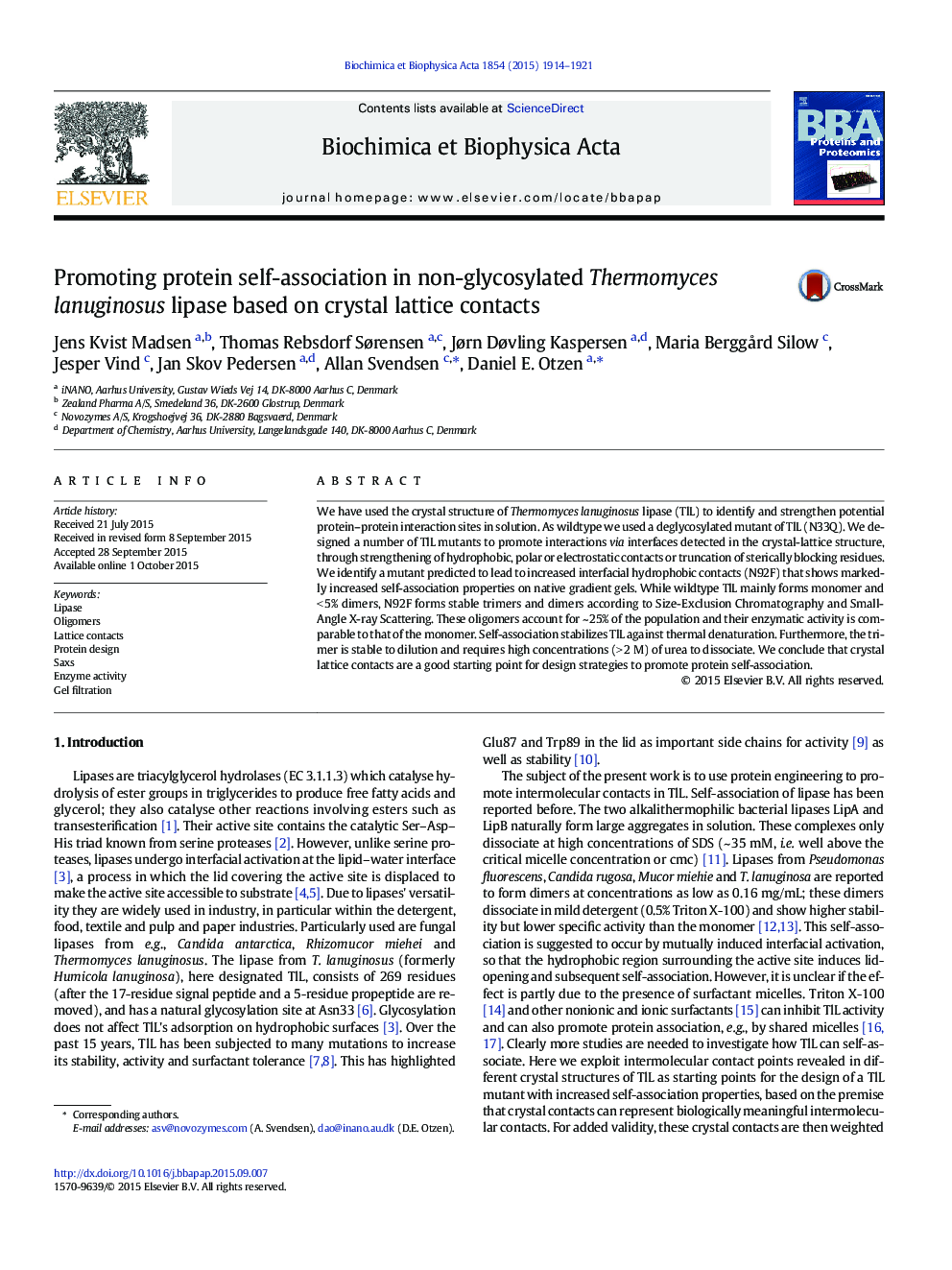| Article ID | Journal | Published Year | Pages | File Type |
|---|---|---|---|---|
| 7560819 | Biochimica et Biophysica Acta (BBA) - Proteins and Proteomics | 2015 | 8 Pages |
Abstract
We have used the crystal structure of Thermomyces lanuginosus lipase (TlL) to identify and strengthen potential protein-protein interaction sites in solution. As wildtype we used a deglycosylated mutant of TlL (N33Q). We designed a number of TlL mutants to promote interactions via interfaces detected in the crystal-lattice structure, through strengthening of hydrophobic, polar or electrostatic contacts or truncation of sterically blocking residues. We identify a mutant predicted to lead to increased interfacial hydrophobic contacts (N92F) that shows markedly increased self-association properties on native gradient gels. While wildtype TlL mainly forms monomer and <Â 5% dimers, N92F forms stable trimers and dimers according to Size-Exclusion Chromatography and Small-Angle X-ray Scattering. These oligomers account for ~Â 25% of the population and their enzymatic activity is comparable to that of the monomer. Self-association stabilizes TlL against thermal denaturation. Furthermore, the trimer is stable to dilution and requires high concentrations (>Â 2Â M) of urea to dissociate. We conclude that crystal lattice contacts are a good starting point for design strategies to promote protein self-association.
Related Topics
Physical Sciences and Engineering
Chemistry
Analytical Chemistry
Authors
Jens Kvist Madsen, Thomas Rebsdorf Sørensen, Jørn Døvling Kaspersen, Maria Berggård Silow, Jesper Vind, Jan Skov Pedersen, Allan Svendsen, Daniel E. Otzen,
